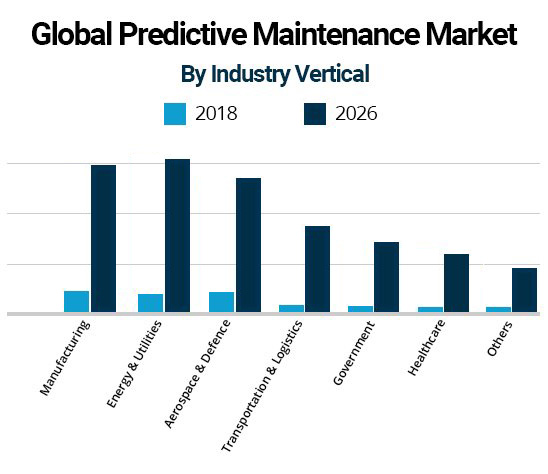What are Smart Current Sense Resistors?
The definition of smart in the context of a current sense resistor would be an integrated component solution to transmit a continuous stream of data via a preferred protocol (i.e. CAN, I2C, SPI) providing the status of Vf (V), current (I) and element temperature (°C) at any given time. The smart current sense technology would sense early current fault condition and protect the load from potential damage.
Demands from component technology are evolving. By linking technology concepts with current and future market trends, we can explore what we may require from passive component technology in the coming years.
The smart current sense technology would sense early current fault condition and protect the load from potential damage. TT Electronics is passionate about keeping close with technology trends and believe smart component sensing technologies are one of the core enablers of change.
In this article, we discuss passive components for current monitoring, the current sense market (today and future), and predictive/preventative maintenance.
Chapters
Chapter 1
What is the Meaning of Smart Current Sense and its Impact on Industry 4.0?
In the world of ever-increasing and newer generations of electronics, we will find ourselves with an increasing level of information at our disposal. This will allow us to monitor more of the unknowns within electrical systems, enabling us to predict more accurately field failures, potentially before they even occur.
The question is,
Will the future be a place where this type of technology becomes embedded at the component level and eventually commoditised?
If so, the next generations of electronic design could depend on the successful development of such products and one day be taken for granted.
TT Electronics believes it is essential to maintain close relationships with our customers to stay intimate to their technical requirements. This allows us to examine whether there is a current early life developing market for products which may become mainstream within the electronics design industry.
To clearly define what we are referring to as “smart” in the context of a current sense resistor...
It would be an integrated component solution to transmit a continuous stream of data via a preferred protocol (i.e. CAN, I2C, SPI) providing the status of Vf (V), current (I) and element temperature (°C) at any given time.
Industry 4.0 encompasses the digital change of the industry.
We catalogue development throughout history in terms of revolutions; these have been fed by enabling technologies, i.e. you could argue the first revolution was born out of the development of the steam engine, fundamentally bringing power to transport, agriculture and manufacturing sectors.
Technological advancement can, therefore, be described by these more significant milestones, which led to a series of more incremental improvements. The advent of the 4th industrial revolution or “Industry 4.0” comes about from smarter and more connected technologies being embedded into our everyday lives.
As this continues to happen enabled by technologies such as IoT, 5G, AI learning systems, autonomous vehicles, smarter robots, etc., we will see an improvement in how we manufacture products.
Chapter 2
The Next Generation of Passive Components for Current Monitoring
The active element of the smart current sense technology would sense early current fault condition and protect the load from potential damage. Effectively the active portion of the component would contain an amplifier to boost the low Vf drop across the resistive element and make it readable with good accuracy into an ADC (Analogue to Digital Converter).
This active portion of the device could do much more with a continuous current signal as once it has this information, it can apply rules and protection protocols in real-time. This means that we can not only be smarter with how we send power to a load but also with how we protect a load from excessive power or other potential fault conditions. This has a direct impact on predictive/preventative maintenance systems and would subsequently reduce cost by allowing the fault to be detected sooner with less technical input to fault-find the complex system.
Development and Growth of Sensing Technology
As mentioned, we live in a world where we have never had so much information at our disposal. This has resulted from the development and growth of sensing technology. Of course, information only becomes useful if it is accurate; you are processing it and taking action based upon its input. When looking at smart component technologies, the core technology is the same to enable the functionality of the component, i.e. for smart current sense the core technology is a resistive current shunt.
By monitoring such information continuously, the system can build trends and make analysis when the drive is under different load conditions. With enough information, it really will become possible to predict failures and take action before they even happen. This will be the norm for systems conducting more of their health checks and preventative maintenance reducing system downtime.
This has a direct implication on the ability to boost the reliability of systems (such as drives) performance while also saving cost. If machines can incorporate their preventative maintenance strategy or provide more information regarding their health status, then the service engineer would not have to spend so much time to diagnose and repair the fault.
This would consequently result in a cost-saving by reducing the service time and potentially preventing any downtime, which would be the perfect state for any system.
Chapter 3
What the Market Looks Like Today and the Market in the Future
In today’s current markets, we have so much information at our disposal, and this is only set to increase as it has done exponentially over the past 30 years. With more information opens possibilities which were never available before.
However, the analysis techniques used to interpret and process information are still evolving, such as AI systems. With levels of information increasing all around us, we need to advance how and what we do with it. The information has zero value unless it is accurate and acted on.
What might the market look like in the future?
A key market moving forward for the application of this technology has to be the predictive/preventative maintenance market as a result of cost pressures and the continual drive for improvement which will systematically lead to more companies finding the adoption of such technologies increasingly attractive.
Allied Market Research cites,
"The global predictive maintenance market size was valued at $2,804.38 million in 2018, and is projected to reach $23,014.7 million by 2026, growing at a CAGR of 30.20% from 2019 to 2026."

Source: Allied Market Research, Predictive Maintenance Market
In the next section, we discuss attributing factors for the expected growth from the market sector.
Chapter 4
Benefits of Predictive/Preventative Maintenance
It is clear to see there is growth expected from the market and benefits of predictive/preventative maintenance. Some of the benefits are:
- The extended service life of the equipment or assets
- Increased plant safety
- Optimised handling of spare parts
- Fewer breakdowns and outages
The increasing demand to improve the uptime of manufacturing systems and infrastructure of ground-based systems are anticipated to influence the predictive/preventative market to grow positively in the coming years.
If market information and VoC (Voice of the Customer) data are available, it will help support the development of more enabling technologies. Additionally, IIoT is seen as an emerging growth technology.
If the integration of predictive/preventative maintenance systems, which makes use of machine learning and real-time condition monitoring to assist in taking prompt actions, combines with more sensing or smart component technologies a new market opportunity will arise.
In the next section, we listed the key technology trends that will directly support or complement the development of smarter component technologies for predictive/preventative maintenance systems.
Chapter 5
What are the Key Trends Which are Influencing the Market Today?
Listed below are key technology trends that will directly support or complement the development of smarter component technologies for predictive/preventative maintenance systems.
- Cost reduction
- Increase reliability
- Connectivity
- IIoT
- 5G
- Industry 4.0
- Efficiency
The possibilities moving forward
This technology, even though it is in its infancy, presents vast benefits in the industrial drives market and others. Benefits would include reduced preventative maintenance cost, continual fault monitoring, improved reliability and reduced downtime.
It also unites technologies while enhancing reliability and reducing cost. While the smart component may cost more than merely a conventional component, if exploited well, the enablers from smarter components would more than repay the additional upfront cost.
More importantly, when adopted, the system can start building information to create trends over years’ worth of data that was never previously available.
Chapter 6
Smart Current Sense (SCS) Technology Examples
These are two examples where SCS (Smart Current Sense) technology can have an impact in the electronics industry, but there are many more applications this technology can benefit.
1. Industrial Drive Maintenance
Industrial drives are increasingly used within many sectors supporting the infrastructure that we have all become so reliant on.
Critical components within the drives could be made smart to continually health monitor; this would provide more information for the service engineers to fix the drive with less downtime and allow for fault monitoring to predict failure.
This would result in a more effective preventative maintenance strategy and increase the drive system reliability saving cost long term.
2. EV (Electric Vehicle) & PHEV (Plug-in Hybrid Electric Vehicles) Battery Monitors
It’s clear the trend towards electric vehicles is a key trend and gaining more momentum as governments continue setting more regulations. This not only applies to the vehicle manufactures but also the companies who will pave the way with the electric vehicle charging infrastructure.
As battery technology becomes more sophisticated, as it will, it’s crucial to have the fault identification systems to safeguard.
Conclusion
Smart current sensing presents an exciting change for the future.
TT Electronics is passionate about keeping close with technology trends and investing in R&D to create the enablers for current and future designers.
All designs start with the component technology and build up to the systems level. If designers are not aware of the latest component technologies, which can bring benefit in system design, then the component technology will never be fully explored.
Smart component sensing technologies are one of the core enablers of change. We will continue to follow key trends such as reduced cost, increased reliability, increased power density, reduced environmental impact and increased efficiency.
The long term potential benefits of SCS (Smart Current Sense) technology is a reduction in time to market within the technology promoting a more modular form, a local current sensor away from the main PCA (Power Controller Assembly) with temperature monitoring advantages and potential integration of IoT connectivity.

